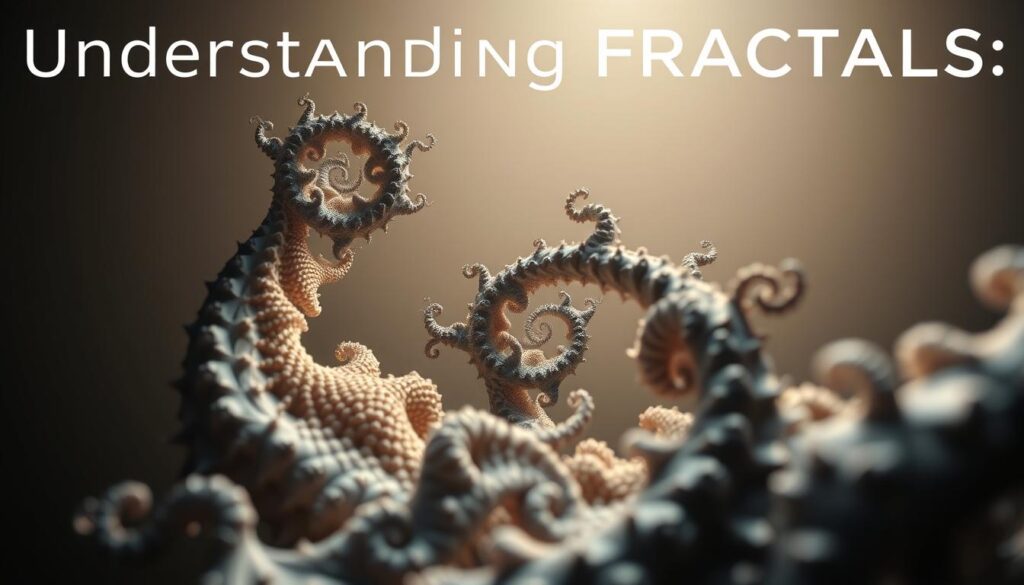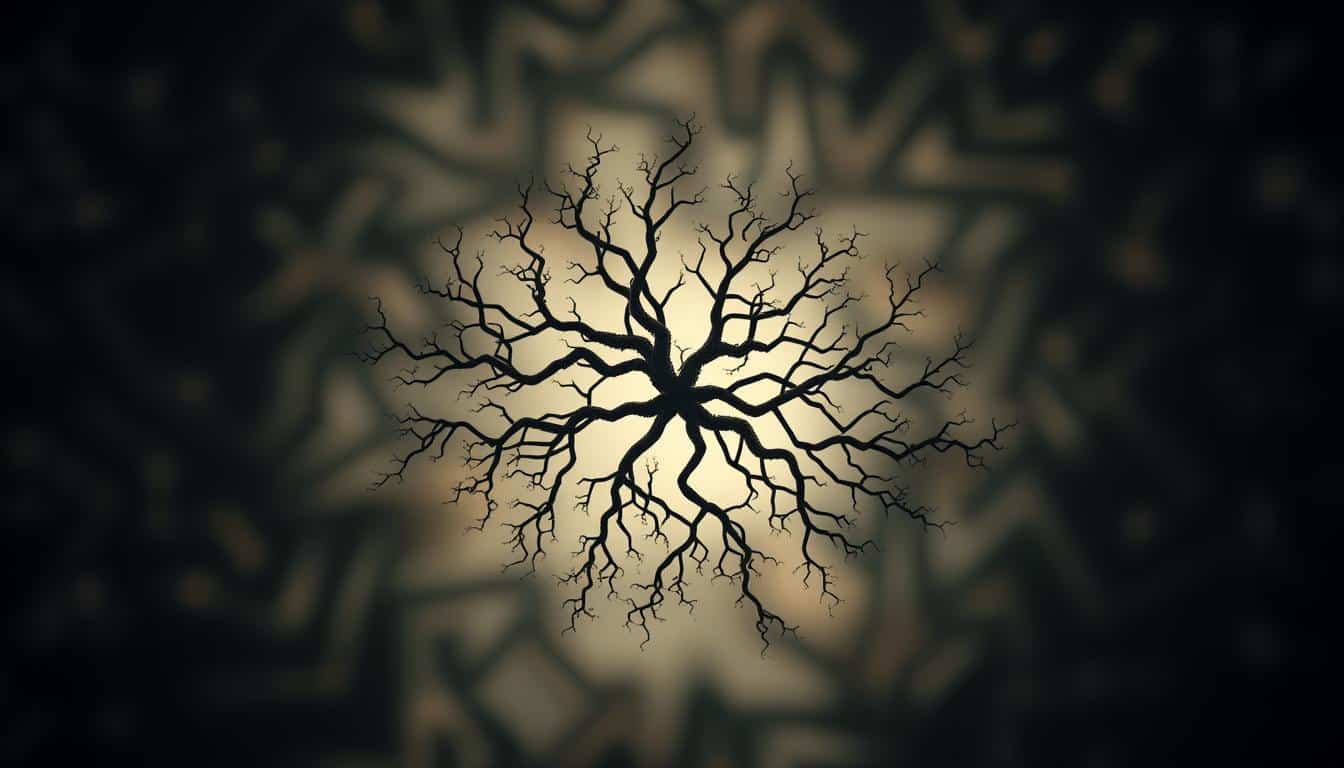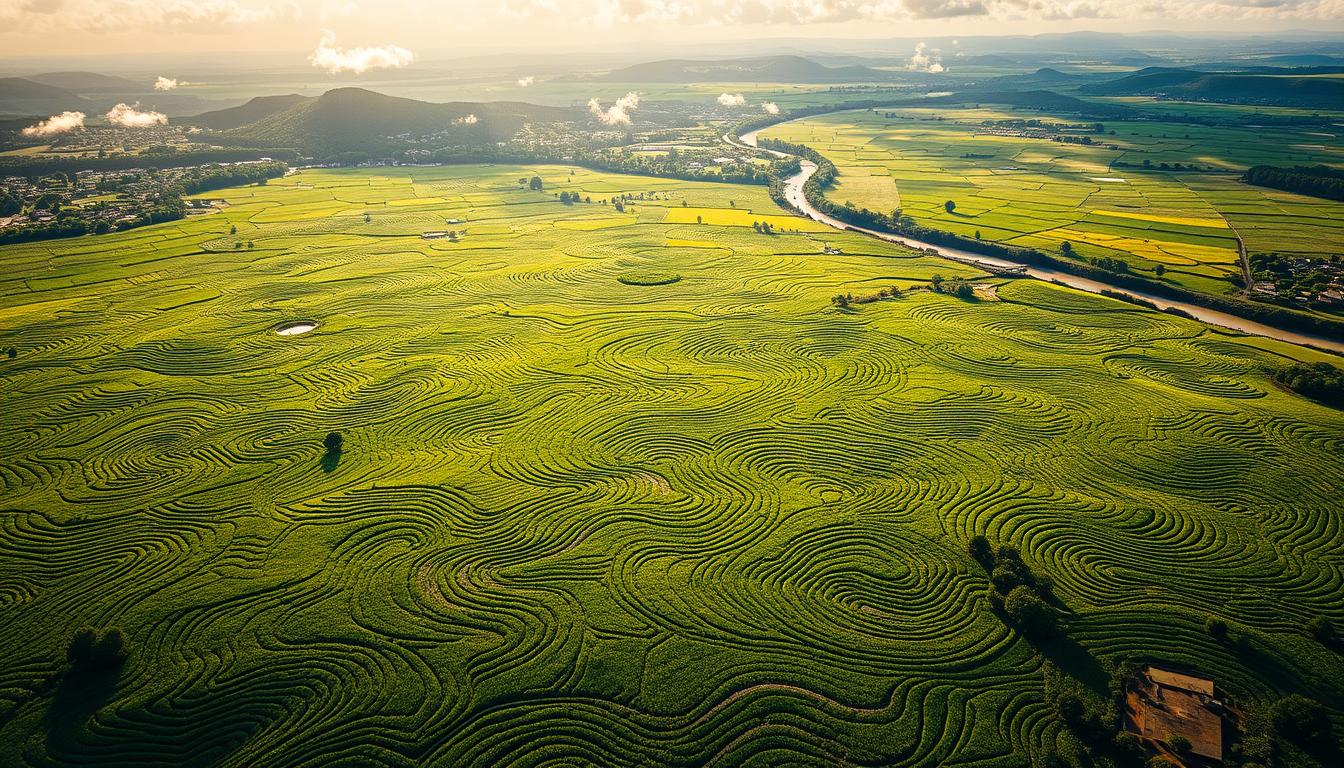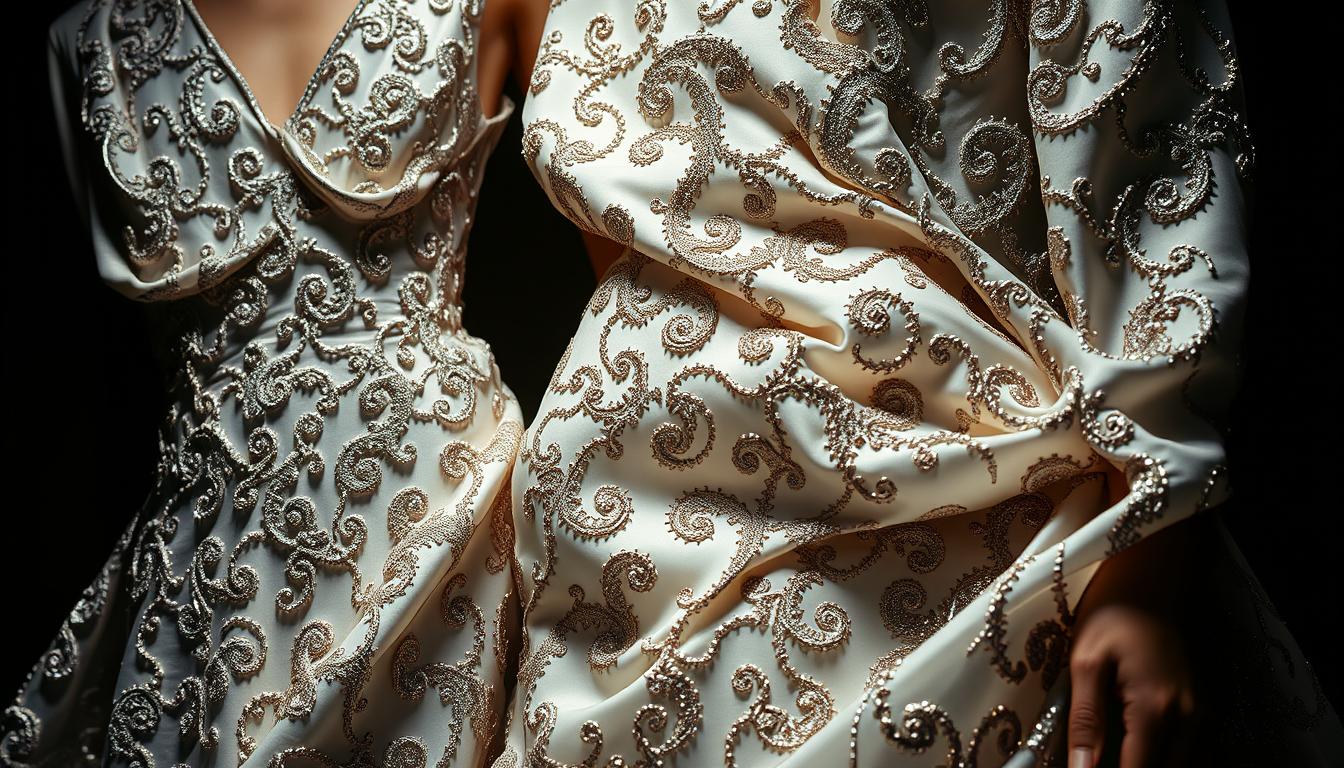Fractal patterns are fascinating structures. They show self-similarity at different scales, deeply influencing music and dance. These patterns appear in varied rhythms and movements. They make the audience’s experience richer.
This article explores the world of fractals and their role in art, especially in performances. By looking at scientific studies and creative partnerships, we’ll see how fractals shape art.
Understanding Fractals: A Brief Overview
Fractals are complex shapes that look pretty much the same up close and from afar. Benoit B. Mandelbrot, a mathematician, made this concept famous. It helps us understand shapes in nature. You can see fractals in how the coast looks, how trees branch out, and how lightning moves.
Fractals aren’t just about math; they’re also key in art. They amaze artists and creators with their beauty. Through fractals, we see how patterns repeat forever. This links math with the real world of beauty.

Fractal Patterns in Music and Dance Forms
Looking into music, we find patterns that touch our emotions deeply. Such rhythms have qualities called fractals, a mix of change and steadiness. Jeff Porcaro, a famous drummer, showcased this beautifully in his music.
The Influence of Self-Similar Patterns in Rhythms
When we listen to music, it’s the familiar yet changing patterns that catch our ear. Drummers like to play with these patterns. They mix beats in ways that reflect fractal shapes. This makes the music more engaging for us.
Case Study: Jeff Porcaro’s Drumming Techniques
Jeff Porcaro knew how to make his drumming stand out. He used dynamics and timing to reflect these fractal patterns. Porcaro’s blend of steady and varying beats added depth to his music. He set a high standard for both feeling and skill in drumming.
The Science Behind Fractals in Music
The Max Planck Institute has discovered amazing links between music’s fractal patterns and our body’s natural rhythms. This shows music does more than please our ears. It actually syncs with our body’s own systems.
Research Findings from Max Planck Institute
Max Planck Institute researchers have been looking into how music works. They found music’s structure is similar to patterns in nature, like our heartbeats. By studying timing and volume, they found music’s complexity matches how we hear and react to tunes.
Fractal Properties in Human Heartbeat Dynamics
Our heartbeats show fractal patterns, just like music does. This similarity hints that music touches us on a deep, natural level. Looking at heartbeats like fractals helps us understand why music feels special, linking it to both our health and emotions.
Fractal Patterns in Dance: A Creative Exploration
Dance and math blend to open artistic doors, featuring patterns like fractals. Choreographers like Reggie Wilson work with mathematicians, such as Jesse Wolfson. They use fractals to improve how dances look and feel.
The Intersection of Dance and Mathematical Concepts
Fractals are patterns that repeat and look similar at every scale. Choreographers use these to make dances more intricate. This way, dancers can showcase movements that mirror complex math structures.
Collaborative Projects Showcasing Fractal Symmetry
Wilson’s Fist and Heel Performance Group showcases how dance and math meet. Their dances mirror the repeating patterns of fractals. This invites viewers to see a mix of art and science.
Generative Art and Fractals in Movement
Technology’s role in dance opens a new chapter for generative art. Dancers explore virtual spaces filled with fractal shapes. This blend of digital and physical worlds offers fresh ways for artists to move and express themselves.
Using Technology to Explore Dance and Fractals
Thanks to tools like the Microsoft Kinect, dancers can interact with fractal environments in real-time. This tech turns movements into visual art, giving traditional dance a new twist. It’s a lively exchange between the precision of dance and the complexity of fractals.
In these interactive spaces, dancers gain a better grasp of their movements and the logic behind them. This blend of art and science opens new doors for creativity. It makes dance a broad and ever-changing form of expression.
The Role of Cultural Contexts in Fractal Patterns
Fractal patterns aren’t just math. They’re part of culture, especially in dance and music. Different cultures use fractals in dance. Their rhythms and moves mirror structures that are key to their traditions.
African dance shows this well, using fractals to tell community stories. Through movements and beats, a performance art harmony is created. Dancers blend history with now, using these fractal designs.
Looking into cultural backgrounds, we see how math and beauty connect. Artists use fractal ideas to make their work richer. This helps us all understand and enjoy the culture behind the art. The mix of fractals and various cultures creates a beauty we all share, no matter where we’re from.
Applications of Fractals in Performance
Fractals offer a new approach in the performance arts, leading to bold, creative ideas. Choreographers use these patterns to move past old dance styles. This results in fresh dance pieces that make people think and feel deeply.
How Fractals Enhance Choreographic Creativity
Fractals give choreographers the freedom to create intricate dances. These dances capture the beauty of math. They lead to performances that are both beautiful to watch and full of deep ideas. Fractals make way for new stories in art, adding depth to the dance scene.
Crossover Between Dance Forms and Mathematical Patterns
Dance and math come together to change modern performances. Artists mix fractal math with various dance styles. This mix makes new, exciting kinds of dance. It creates a diverse artistic world that attracts all kinds of viewers.
Challenges and Limitations in Exploring Fractals
Fractal patterns blend art and math in a unique way, especially in performances. But, using fractals creatively isn’t easy. Artists face many hurdles that can mess with their vision.
Understanding Perception and Attention in Performance
How the audience reacts is key to a show’s success. But, fractals are complex. This means people see the show differently. Let’s look at why:
- Cognitive load: Fractals can be too much for some, making it hard to enjoy the show.
- Attention span: It’s tough to watch the many layers in fractal dances without getting lost.
- Cultural context: Everyone’s background influences how they see fractal patterns, increasing the challenge.
This shows the struggle in using fractals. Artists must keep learning and adapting. They aim to connect complex dances with the viewers.
Future Research Directions in Fractals
Fractals are being explored across many fields, opening new research paths. These routes go past the usual lines, blending art, science, and tech. This mix offers a chance to see how fractals relate to our lives.
Researchers want to see how fractal art affects those who make and see it. They’re looking into how fractal music might improve how well musicians perform. This could lead to knowing more about our emotional and mental reactions in different situations.
Working together like this could lead to fresh ways of doing things in the arts. By bringing experts from different areas together, we could learn a lot more about fractals. This might lead to exciting new discoveries for both artists and scientists.
Conclusion
Exploring fractal patterns in music and dance shows how art and math are linked. It shows the importance of structures that repeat on different scales. These not only make art more impressive but also change how people see and feel about it. By studying these patterns, artists bring out new layers in their work. This makes their performances more interesting to people watching.
Artists, mathematicians, and scientists are working together more and more. Their joint efforts are leading to new uses for fractals in performing arts. This teamwork is making art richer by combining logic and beauty. In the end, this helps artists and viewers feel more connected to each other through a shared appreciation of beauty.
The future looks bright for art forms using fractal patterns. Continued research into these patterns is making art and science closer. This research is not just good for art but also encourages more talk between different fields. It offers endless possibilities for those ready to dive into the complexity of combining art and science.



